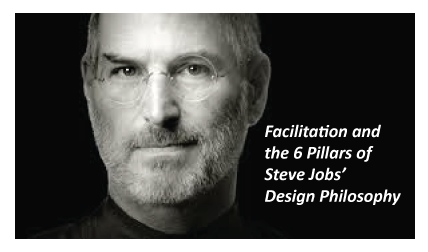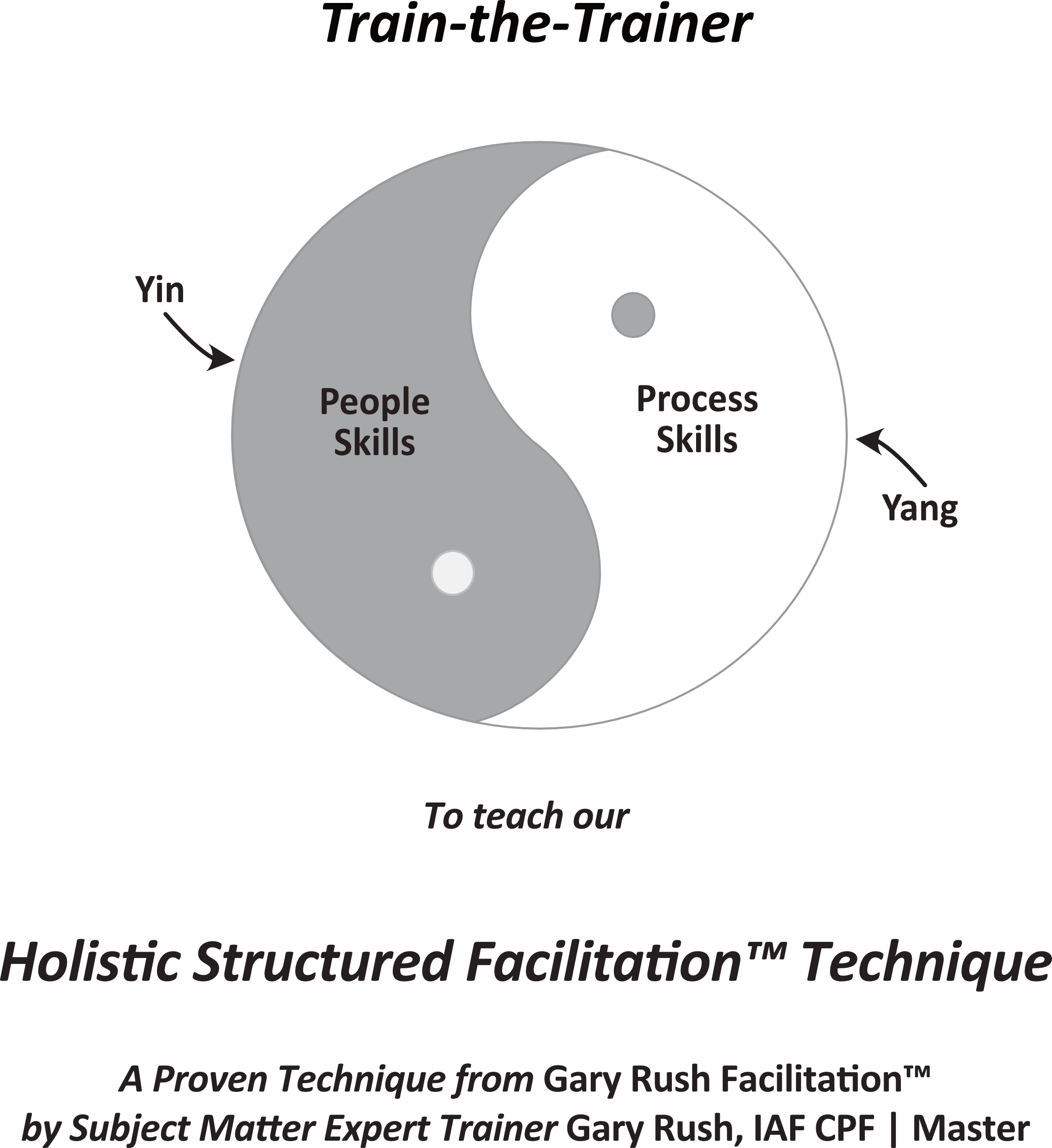December 2011 - The FoCuSeD™ Facilitator eNewsletter

Facilitation and the 6 Pillars of Steve Jobs' Design Philosophy | Gary Rush Facilitation
I read a blog entry by Cliff Kuang, editor of Co.Design, in which he discusses the 6 Pillars of Steve Jobs’ design philosophy. I have always had a great deal of respect for Steve Jobs and began thinking about how his 6 pillars of design might apply in Facilitation.
The 6 Pillars of Design
Cliff Kuang described the 6 Pillars of Steve Jobs’ Design Philosophy as:
- Craft above all
- Empathy
- Focus
- Impute
- Friendliness
- Find Simplicity for future in metaphors from the past.
Mr. Jobs designed products that everyone had to have – they became accessible and now, they are indispensable. As Facilitators, we don’t design products as Mr. Jobs did, we design workshop processes and we design the group environment in which the participants experience the workshop processes. How can we become accessible and indispensable? Applying the 6 Pillars of Design to facilitation might help.
Craft Above All
This is pretty straightforward – do your best. Designing a workshop process and the workshop environment requires uncompromising quality. Settling for second best is not acceptable – especially since participants depend on the Facilitator to create the appropriate process and the appropriate environment. With processes, it means, Facilitators cannot just pick a “template” answer for a workshop process and have that be acceptable. Taking great care in designing the process – holistically – makes us artisans (craftsmen, but gender neutral). Participants depend on our process skills. With the environment, it means do not settle for second-best – ensure that the environment is conducive for the Participants.
Empathy
This is a critical pillar and one that every Facilitator must keep in mind. A Facilitator who does not fit with the Participants will always seem more intrusive than engaging. A Facilitator has to be a chameleon – one, who adapts to, appreciates, and understands the culture (corporate, ethnic, etc.). This does not require embracing, abiding by, agreeing with, or any value judgment. It’s the ultimate in “neutrality”. This requires a practical understanding of psychology (e.g., MBTI) – not labeling, but understanding and proper use. It requires being comfortable with your self. It requires true, effective Active Listening. Listening to Participants and using the words that they use, the phrases that they use, and understanding their culture makes Participants feel as if you get them. A Facilitator who develops empathy fits into any environment.
Focus
What this means in design is that, “once you have an idea, remove all of the noise so you can focus”. This applies whether the Facilitator is designing the workshop process or the environment. In the workshop process, this means, do one thing at a time. Groups cannot focus when two questions are asked at once or two lists are being developed. In the environment, this means, clear away distractions. Focus on one task at a time.
Impute
This means to attribute certain characteristics to something. This leads to the reality that people judge a book by its cover. In Facilitation, this means that first impressions count. When you first meet the client, he or she gets an impression. When you begin the workshop, the participants get an impression. How you present yourself, how you begin workshops, and how the environment feels when participants first enter, all set the tone for how the participants relate to you and to facilitation. Always make a good first impression.
Friendliness
This is being “user-friendly”. Clients and Participants need to feel that the process is user friendly; that they don’t need training to understand how to participate. Forcing unnecessary rules without being flexible causes clients and participants to feel that the process is unfriendly. This also applies to the preparation phase. When clients or participants have to go out of their way to work with a Facilitator, it’s easier not to. Be flexible and accessible.
Find Simplicity for future in Metaphors from the Past
Mr. Jobs used this to make computers accessible. He called the screen a “desk top” and immediately it related to those who had never used a computer. Use what people already know in a new way. I call data entities, things, to keep it simple. Teleconferencing software has screens that represent flip charts and white boards. KIS – Keep it simple to ensure that the Participants can relate to what you are doing, saying, and using. If they can relate, they will participate.
Summary
Make Facilitation accessible and indispensable. Facilitation is our means to collaboration – something we all need to encourage. It needs to become an everyday activity, the only way we hold meetings, solve problems, and the only way decisions are made. Facilitators believe in the wisdom of the group and we engage more people through facilitation, creating better answers. Our struggle has been in being pegged much as computers were in the 70’s and early 80’s – it’s a neat idea, but not for everyone and not for everything. Mr. Jobs changed that by following his 6 Pillars of Design. We can change the perception about Facilitators and facilitation the same way – through better design. Only do your best, relate to the customer, focus on one thing at a time, set a great first impression, be flexible and keep the process friendly, and find simplicity in metaphors from the past. Facilitation is accessible – for everyone and for everything – it is indispensable. ![]()


